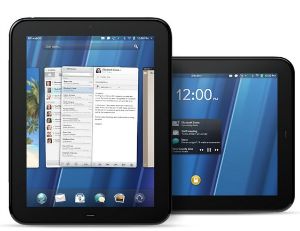Although Hewlett-Packard announced that the TouchPad tablet will soon meet its demise, it still has a job at California’s Stanford University, where researchers are using the device to control a Magnetic Resonance Imaging scanner.
MRIs collect detailed 3-D images of the body without the radiation exposure levels of X-rays. The procedures are now being used for both diagnostic purposes as well as ultrasound therapy.
Exam room
Andrew B. Holbrook, a research associate in the radiology department at Stanford’s School of Medicine, developed applications for the TouchPad to allow technicians to control the device from inside or outside the exam room as well as view and manipulate data. Stanford Professor Kim Butts Pauly is directing the project.

Multiple apps could control the MRIs, with one guiding a device inside the body and others ensuring that the scan is functioning correctly.
HP had announced it would discontinue development of webOS devices by 31 October, despite a last-minute sales push involving slashed prices and a boost in inventory. Researchers at Stanford began working with the TouchPad before HP announced its end.
“It was a bit of a risk – if HP changed their mind, great!” said Holbrook. “If they ultimately followed through and shuttered the OS, well, we still made a lot of progress on bringing MRI control to tablet architecture, and we’d move on with what we’ve learned.”
They chose the mostly plastic TouchPad because it could be readily torn down and reassembled since HP didn’t use glue to hold the screen in place, said Holbrook, who had to strip all metal components from the TouchPad so that it can enter the MRI’s highly magnetised chamber.
No metal parts
He removed metallic components such as the vibration motor and speakers. Without stripping metal parts out, they can become dangerous projectiles during a procedure, HP reports.
The multitasking features of the interface allow researchers to switch back and forth between scans on the tablet. One app could provide a view of a patient’s bone structure and the other show how well a patient is breathing.
On 9 December HP announced that it would make the webOS platform an open-source technology. With webOS becoming open source, development of health care applications for the TouchPad and future webOS tablets could increase.
Working on the webOS tablet appealed to Holbrook because the OS was modifiable, but now with it becoming open source, the possibilities for research multiply. The researchers were able to obtain full developer access to the TouchPad, Holbrook noted.
As an open-source platform, webOS could benefit from greater developer support in terms of more rapid enhancements and bug fixes. In addition, future tablets can be custom-built to be suitable for the magnet room and for imaging, he said.
Using the source code, Holbrook plans to remove a volume overlay that shows up when pressing the volume keys to shift images up and down.
“With all the source code, this is one simple change I could make to improve apps even more,” said Holbrook.
Experimentation
Researchers also use the multitouch gestures of the TouchPad to manipulate the MRI scans.
Following the announcement that HP would phase out the TouchPad, the company provided defective or “fire-sale” devices for Holbrook to experiment with.
Despite the TouchPad being discontinued, Stanford will continue its work with the device. “I hope to be using it in patient clinical trials within the coming months, as well as with other patient research once some other applications have progressed,” said Holbrook. “I do not doubt that tablet and mobile architecture will become more prevalent in MRI exams, especially for interventional scans or diagnostic scans that require more interaction.”




